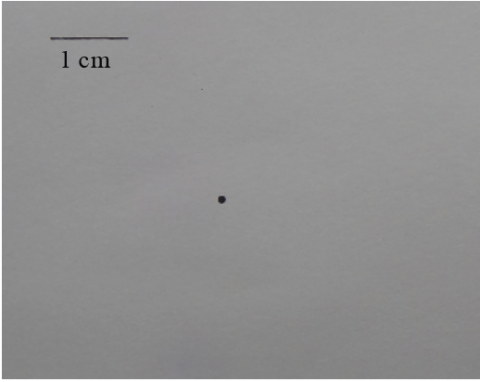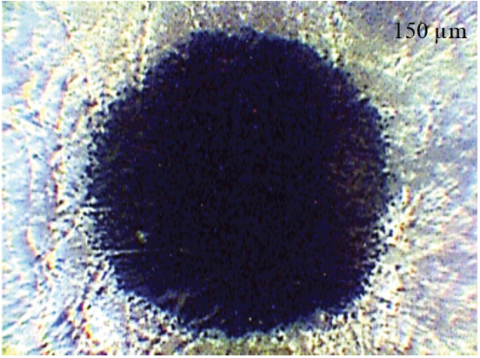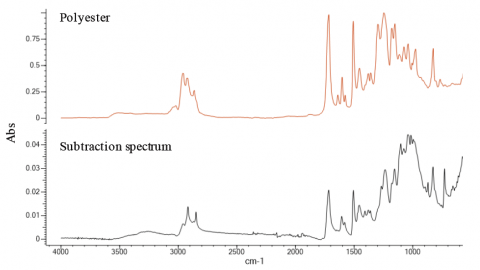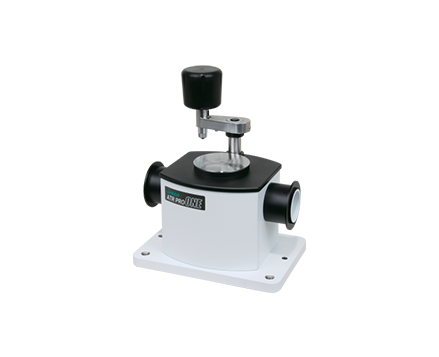FTIR Analysis of Foreign Material using View-Through ATR
January 4, 2024
Introduction

There are various FTIR methods that can be used to identify foreign material or contaminants. FTIR microscopy is used for foreign material where the size is in the order of few microns, but when a sample with foreign material can be observed by the naked eye, the particle typically is typically greater than several hundred microns and does not require an FTIR microscope. A macro ATR method may be a suitable alternative and offers advantages such as minimal sample preparation, non-destructive measurement and easy-handling.
A key requirement for high quality ATR measurement is full contact between the sample and ATR prism. In the case of a conventional ATR accessory, the user cannot ensure whether the prism is in direct contact with the foreign contaminant or not. JASCO’s latest FTIR accessory, the ATR PRO ONE VIEW provides real-time visualization of the sample area in contact with ATR prism. This feature is highly effective for the measurement of foreign materials on opaque substrates such as paper, plastic and metal.
This application note shows an example of analysis of a foreign material using the ATR PRO ONE VIEW.
| Measurement Condition | |
| Sample | Foreign material, paper, ATR |
| Instrument | FT/IR-4600 |
| Measurement Method | ATR |
| Accessories | ATR PRO ONE VIEW |
| Detector | DLATGS |
| Prism | Diamond |
| Accumulation | 50 |
| Resolution | 4cm-1 |
Experimental
Figure 1 shows the picture of the sample. Figure 2 shows the observation image of the target in full contact with the prism.


Keywords
070-AT-0245, ATR, foreign material, FTIR, cellulose, paper analysis, polyester, image analysis
Results
Figure 3 shows the spectra of paper and foreign material on paper. In the upper spectrum, the O-H peak (around 3300cm-1) and C-O-C peak (around 1000 cm-1) confirmed that the main component is cellulose. In the lower spectrum, C-H peak (around 2900 cm-1) and C=O peak (around 1720 cm-1) are not attributed to cellulose.
In order to identify the foreign material, the subtraction spectrum was calculated and searched through a spectral database identifying the foreign material as polyester.


Featured Products:

FTIR Analysis of Foreign Material using View-Through ATR
Introduction

There are various FTIR methods that can be used to identify foreign material or contaminants. FTIR microscopy is used for foreign material where the size is in the order of few microns, but when a sample with foreign material can be observed by the naked eye, the particle typically is typically greater than several hundred microns and does not require an FTIR microscope. A macro ATR method may be a suitable alternative and offers advantages such as minimal sample preparation, non-destructive measurement and easy-handling.
A key requirement for high quality ATR measurement is full contact between the sample and ATR prism. In the case of a conventional ATR accessory, the user cannot ensure whether the prism is in direct contact with the foreign contaminant or not. JASCO’s latest FTIR accessory, the ATR PRO ONE VIEW provides real-time visualization of the sample area in contact with ATR prism. This feature is highly effective for the measurement of foreign materials on opaque substrates such as paper, plastic and metal.
This application note shows an example of analysis of a foreign material using the ATR PRO ONE VIEW.
| Measurement Condition | |
| Sample | Foreign material, paper, ATR |
| Instrument | FT/IR-4600 |
| Measurement Method | ATR |
| Accessories | ATR PRO ONE VIEW |
| Detector | DLATGS |
| Prism | Diamond |
| Accumulation | 50 |
| Resolution | 4cm-1 |
Experimental
Figure 1 shows the picture of the sample. Figure 2 shows the observation image of the target in full contact with the prism.


Results
Figure 3 shows the spectra of paper and foreign material on paper. In the upper spectrum, the O-H peak (around 3300cm-1) and C-O-C peak (around 1000 cm-1) confirmed that the main component is cellulose. In the lower spectrum, C-H peak (around 2900 cm-1) and C=O peak (around 1720 cm-1) are not attributed to cellulose.
In order to identify the foreign material, the subtraction spectrum was calculated and searched through a spectral database identifying the foreign material as polyester.


Keywords
070-AT-0245, ATR, foreign material, FTIR, cellulose, paper analysis, polyester, image analysis

 Download This Application
Download This Application
